Resources by Carolyn Browning Helsel
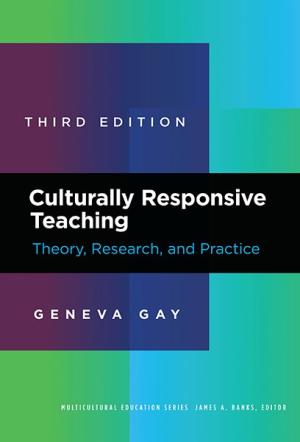
Geneva Gay is renowned for her contributions to multicultural education, particularly as it relates to curriculum design, professional learning, and classroom instruction. Gay has made many important revisions to keep her foundational, award-winning text relevant for today’s diverse student population, including: new research on culturally responsive teaching, a focus on a broader range of racial and ethnic groups, and consideration of additional issues related to early childhood education. Combining insights from multicultural education theory with real-life classroom stories, this book demonstrates that all students will perform better on multiple measures of achievement when teaching is filtered through students’ own cultural experiences. This perennial bestseller continues to be the go-to resource for teacher professional learning and preservice courses. While retaining its basic organization and structure, the Third Edition features: -New research that validates the positive effects of culturally responsive teaching. -Examples that broaden the racial and ethnic groups that can benefit from culturally responsive teaching. -More information on the needs and benefits of culturally responsive teaching with young children. -More attention to the quality of life for students of color in colleges and universities. -The addition of Practice Possibilities at the end of chapters that describe how culturally responsive teaching can be implemented. (From the Publisher)
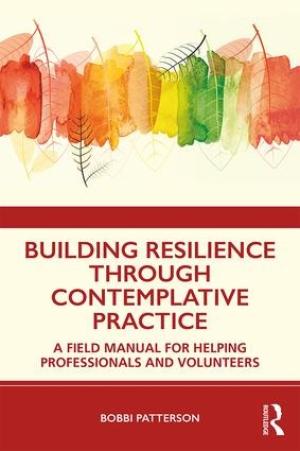
Recasting burnout as a crucial phase of service, Building Resilience Through Contemplative Practice uses real-world case studies to teach professionals and volunteers unique skills for cultivating resilience. Viewing service and burnout as interdependent throughout phases of stability, collapse, reorganization, and exploitation, the book uniquely combines elements of adaptive resilience theory with contemplative practices and pedagogies. Drawing on the author’s extensive experience working at the intersection of service and contemplative practices, this is the first book to demonstrate how and why professionals and volunteers can reframe burnout as an opportunity for resilience-building service. User-friendly case studies provide tools, skills, and exercises for reconstructive next steps. Chapters address personal, group, and structural levels of service and burnout. Illuminating the link between adaptive resilience and burnout as a normal and useful phase of service, Building Resilience Through Contemplative Practice is a necessary resource for professionals and volunteers across a wide range of service settings. (From the Publisher)
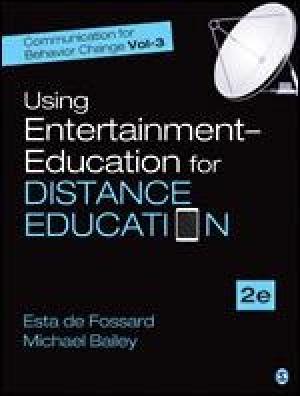
As a professor who teaches in an online education program, I picked up this book with interest for how it might inform my pedagogy. The content of the book, while relevant to my context of theological education, addresses more specifically the needs of organizations working for behavioral change in developing countries, particularly regarding available health interventions such as disease testing and immunizations. The authors address the mediums of radio, television, and internet, and how managers of these educational programs can best utilize different types of information sources. Early on, the authors distinguish between “Edu-tainment” and “Entertainment-Education.” Edu-tainment is a focus on education that employs insights from entertainment to keep learners engaged in the educational process and content. Entertainment-Education relies more heavily on the entertainment side in order to teach a certain topic or attitude, helping participants to empathize with characters in order to consider adopting behaviors similar to the characters. Entertainment-Education might look like a fable told to convey a moral – the story of the fable is interesting in itself, while the moral being taught is present but not foregrounded. With Edu-tainment, the same moral or lesson is present as in the fable, but the lesson or intended learning outcome is more directly named. While the title of the book contains “Entertainment-Education,” “Edu-tainment” is the main focus of the authors. Both approaches appeal to the “E Structure,” which is “Engagement of the audience, through Emotional involvement, which inspires Empathy for certain characters, who then provide Examples that demonstrate to the audience how they can accomplish the desired behavior, and also provide a sense of Efficacy for audience members, who make the desired changes or acquire that desired knowledge and gain a degree of Ego-enhancement (personal growth)” (8). Excellence in Edu-tainment requires a great deal of management and collaboration. The authors describe the various formats for Edu-tainment such as video or radio, and how the eventual product should be constructed with a team of writers, producers, and actors, with how lessons should be piloted with control groups to judge their effectiveness. Persons reading this for the sake of improving their online education pedagogy will feel overwhelmed by the expectations here, but learning about the possibilities for dramatic renderings of lessons with scripted dialogue can provide new ways to think about teaching for those interested in deepening their skills. While this book may not be directly helpful to theological educators because of its emphasis on behavioral modification in developing countries, it does provide some helpful tips.
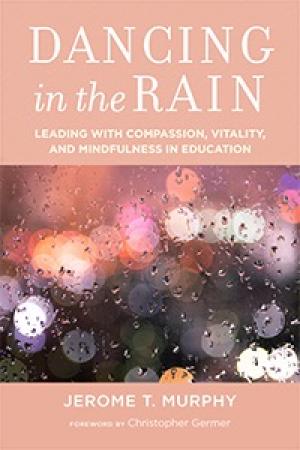
Former dean of the Harvard Graduate School of Education, Jerome Murphy writes as a seasoned educator about how to best care for yourself as a teacher in the midst of daily stress. This book applies to the stress of academia as well as ministry. It is a book I would recommend to students preparing to teach and to serve in ministerial vocations. Murphy highlights the source of stress that afflicts educators: our own responses to stress. When difficult situations arise, we tend to respond in one of three self-defeating ways: ruminating on the negative, rebuking ourselves, or resisting our emotions. Murphy draws from the literature on mindfulness to point out the health benefits of becoming aware of our emotions in the moment and accepting our shortcomings. As an alternative to the cycles of rumination, rebuke, and resistance, Murphy offers a list of instructions that help educators focus on their own values, summarized by the acronym “MY DANCE.” Each letter represents a phrase discussed in the following chapters. “Minding your values” advocates understanding our own life goals and naming our best version of ourselves. Knowing who we want to be helps us evaluate whether our actions are in line with our values. The next chapter, “Yield to now,” captures the importance of in-the-moment mindfulness, trying to stay present to ourselves and others, and includes exercises for practicing mindfulness. “Disentangle from upsets” also highlights the role of mindfulness in preventing us from being consumed by our stress. The chapter titled “Allow unease” instructs readers to attend to the discomfort of negative feelings. “Nourish yourself” emphasizes intentional self-care and practices of gratitude, while “Cherish self-compassion” takes self-care to a deeper level. The last element of the acronym is “Express Feelings Wisely.” In each of these chapters, Murphy brings in personal anecdotes from years of administration and leading workshops for teachers and school principals. He intersperses these lessons with some of his own personal struggles, such as his wife’s diagnosis with Alzheimer’s disease. In these glimpses of personal sharing, the reader gets a sense of how these practices of self-care have been imperative for someone who has transitioned from being a dean of a Harvard graduate school to a full-time caregiver for his wife of nearly fifty years as she slowly loses her ability to recognize him. This book draws our attention to the humanity of all educators: we are not simply vessels of information or mediums of higher learning. Each person has his or her own struggles in living daily life, on top of the demands of our teaching vocations. Attending lovingly to our limitations and caring for ourselves in the midst of these struggles is crucial if we are to be effective as teachers and healthy individuals. I recommend this book to anyone who wants to learn how to better care for themselves in the midst of life’s demands.
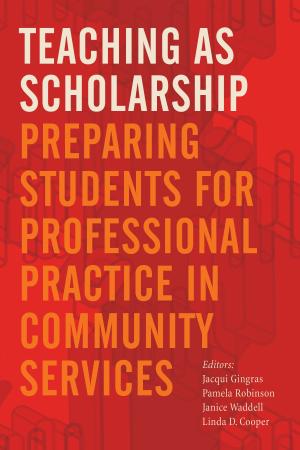
This book brings together faculty reflections on pedagogy and inter-professional collaboration from a broad range of disciplines within a single institution in Toronto: Ryerson University. While a single institution may appear to provide only a limited contextual perspective, the nature of the varied disciplines represented here provides a diverse set of resources, drawing from early childhood studies, nursing, disability studies, social work, sociology, city planning, and midwifery. Though the fields of theology and religion are not represented among the contributors, educators in theological and religious education will resonate with the need to better equip students for inter-professional engagement. Though all contributors are from the same institution, the commonality or coherence among chapters ends with the institutional affiliation of the authors. The editors note the book’s lack of coherence, and justify this by saying that the “frontiers” of community-services-related learning “are not neat, formulaic, or easy to navigate” (5). For this reason, reading this text cover-to-cover can be a disappointment, since the chapters are not of equal quality, nor do they create any obvious structure or overall argument. That said, there are gems in particular contributions for those interested in learning about teaching techniques and reflections that draw from critical pedagogies and integrative approaches, bringing the best of new theories in education. For instance, in “Drawing Close: Critical Nurturing as Pedagogical Practice,” authors May Friedman and Jennifer Poole bring together insights from Indigenous studies, Black feminist thought, maternal pedagogies, and mad studies to argue for a way of being in the classroom that promotes a nurturing relationship between student and teacher, challenging the Enlightenment and Western ideals of independence as a goal of education. These authors call for a suspension on neoliberal concerns for risk and lack of efficiency, instead arguing that an interdependence approach requires the risk of blurring the distinction between teachers and students (96). If a reader of this book were to choose one chapter to read from among the many contributions, this would be the chapter to focus on, and the bibliography provides additional resources to pursue. Other chapters included interesting suggestions and interventions in education, such as “Educating for Social Action among Future Health Care Professionals” which focused on a learner-centered model for course creation. This chapter includes appendices for how the authors Jacqui Gingras and Erin Rudolph were able to craft a course with considerable input from students regarding course themes, which assignments they would have to complete, and what grading rubrics would entail. Other chapters (3, 8) draw from narrative theory and describe the way students are taught to listen to the narratives of clients as well as to their own personal narratives. While this book’s chapters are not equally helpful, the insights available in a few choice chapters are worth the read.